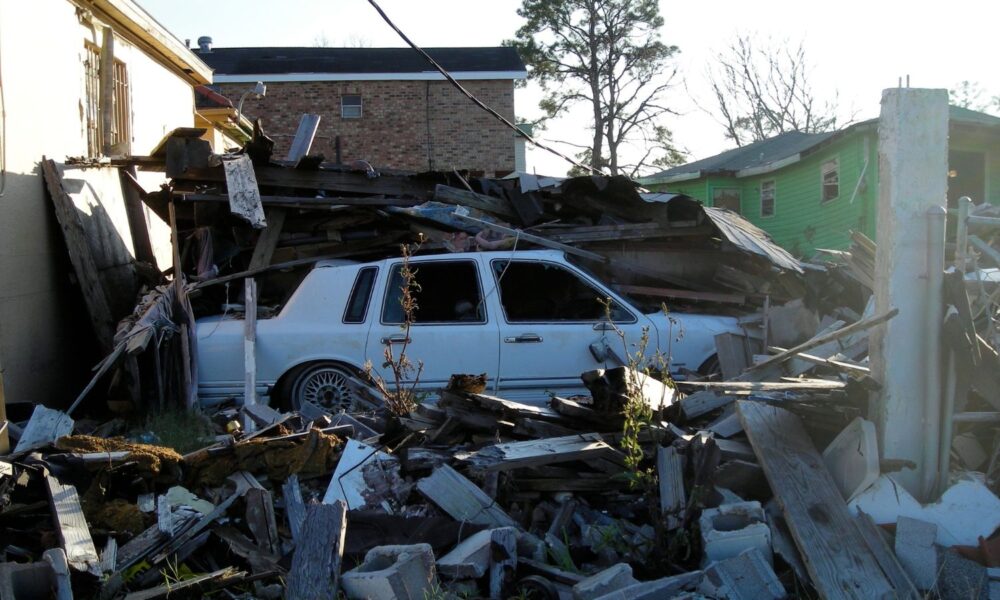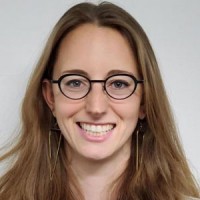Twenty years ago, I stepped off a Greyhound bus in New Orleans carrying a backpack and the flexibility to respond with whatever I could offer. I was a college student from Massachusetts and I came to volunteer in the wake of Hurricane Katrina. What I found was streets lined with water-stained homes, silence where neighborhoods once thrived, and people holding stories too heavy to fit into words.
When I first arrived, I didn’t know exactly what I would be doing. Like so many others, I simply showed up, ready to listen, to lend my hands, and to learn. I thought I was there to help, but in truth, it was the people of New Orleans who became my teachers.
Disasters like Katrina are not isolated tragedies; they remind us that vulnerability is shared and that we all have a responsibility to respond. At the time, I was studying environmental science and taking classes on climate change, but we didn’t yet know the direct relationship between climate change and Katrina. While I didn’t have the data at my fingertips, I did have the unmistakable sense that the world was shifting beneath us. The storm made the future feel less certain, less predictable. It was clear to me that while Katrina devastated New Orleans, it could just as easily have been my family in another storm, in another city. Climate change was stripping away the sense of security we once took for granted.
Now, twenty years later, we do have the numbers. Climate Central’s new analysis shows that Katrina achieved its top wind speeds of 175 mph as a Category 5 storm over waters that were, on average, 1.6°F warmer because of climate change. That level of warming was up to 18 times more likely due to human influence, and it increased Katrina’s maximum sustained wind speed by about 5 mph. According to NOAA, that seemingly small increase could have driven Katrina’s damages 25% higher. What so many of us felt in our bones two decades ago, that Katrina was more than a storm, has since been validated by science.
The human toll and the unequal storm
What haunts me most from that time is not just the physical damage, but how unevenly it fell. Katrina didn’t hit all communities equally (see how residents fought to reclaim their homes despite being told not to return and read Robert Green’s powerful account of losing his family and rebuilding in the wreckage). In the Lower Ninth Ward, where I spent most of my time, people told me about the swamps and marshes that once surrounded their homes, of cypress stands thick with birds and fish, a living shield that softened storms when they were children. But now, the wetlands had died, and those protections had disappeared.
Later, I began to understand why. The man-made Mississippi River Gulf Outlet (MRGO) had funneled saltwater into those marshes for decades, killing the wetlands and stripping away a natural shield that should have protected people. And when Katrina hit, MRGO became a direct channel for storm surge, helping breach the levees and unleashing catastrophic flooding.
For the Lower Ninth Ward, resilience hadn’t failed—resilience had been dismantled. The natural defenses that once gave protection had been taken away by decisions far outside of the community’s control. When the levees broke, those same communities, already robbed of their safety net, paid the highest price.
Katrina showed me that climate change doesn’t just create disasters; it magnifies the injustices we’ve already allowed to exist.
Learning to translate science
One of the many formative moments of my time in New Orleans came during a community meeting with the Army Corps of Engineers. A panel of engineers clicked through slides filled with equations and models, explaining why the updated levees would hold in the future. On the surface, the math looked precise. But the equations were built on the assumption that the future would look like the past. They didn’t account for climate change. They hadn’t adjusted to the new reality.
To many of the people in that room, whose homes had already been flooded, those equations felt like another language. During the meeting, I found myself trying to translate the statements from the Army Corps engineers into plain words, so that community members could understand them, push back, and advocate for themselves. It struck me then how easily science, when not explained or contextualized, can be used to silence rather than empower. Folks were supposed to take the engineers at their word, even though the equations before them didn’t match the lived experience in the room.
That moment stayed with me and showed me that translation is about power. When science is locked away in jargon or based on outdated assumptions, it reinforces inequity by excluding the very people whose lives are most at stake. But when science is opened up, when it is shared in ways that connect to lived experience, it can be a tool for justice. That lesson has shaped my work ever since. Science must serve people, not the other way around.
The lessons we failed to learn
It has been twenty years, and Katrina remains the reckoning that shaped how I understand climate change, justice, and the role that science can play. What I still cannot understand is how it was not also a reckoning that reshaped our nation. Katrina should have forced us to act differently, to do everything in our ability to protect people and confront the realities of a changing climate. Instead, climate change has only accelerated. If a storm like Katrina were to strike today, it is hard to imagine the scale of devastation, but we know it could be significantly worse because today the waters are warmer, the seas are higher, the storms are stronger, and the risks are greater.
While there have been some advances in the last two decades, they have not been nearly enough. And now we are backsliding. The Trump Administration’s dismantling of climate protections, denial of science, and constant stream of disinformation are not just political choices; they are a betrayal of everything Katrina revealed. We cannot claim ignorance anymore. We cannot say we did not know. The only explanation for this inaction and intentional delay is willful disregard for people’s lives and a value system that places short-term profit above human survival.
Twenty years after Katrina, our responsibility is clear. We owe it to the Gulf Coast and to every community on the frontlines of climate change not to let them drown twice, once in the floodwaters and again in our failure to act.

